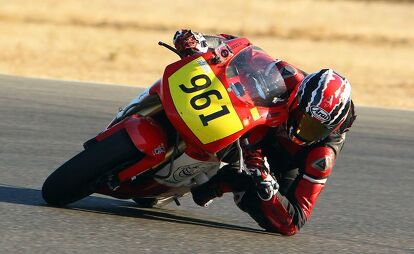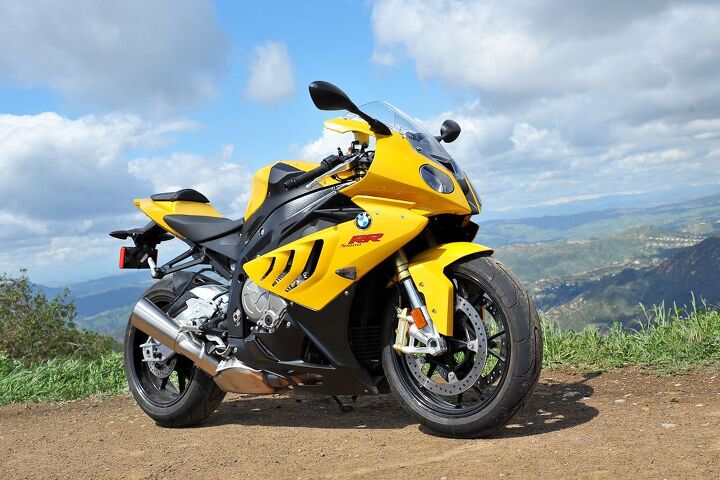Skidmarks - Finding Your Fit
It must be intimidating to be a new rider these days. There’s a vast array of choices – not just of motorcycles, but of riding styles and communities to join – and there’s also an unending cacophony of advice from websites, chatrooms and social media, along with growing pressure to do things perfectly to avoid online ridicule.
As experienced riders, we’re expected to steer folks the right way when we get the inevitable questions about becoming a rider. If you’re like me, you have a script – get training, wear decent protective apparel and buy a small, cheap, disposable motorcycle for your first ride.
Of course, many guys don’t do that. I say “guys,” because women tend to be more sensible and less egotistical about their choice of first motorcycle, as well as their learning process. Men – especially younger men – frequently put Safety on the passenger seat behind Ego, and who am I to judge? My ego, when the ol’ testosterone factory was pumping at 100 percent, probably wore one of those t-shirts that says “If you can read this the bitch fell off,” and meant it (for the record, I don’t approve of such shirts and would not personally wear one, though if I saw a YouTube video of a cat or maybe a squirrel wearing one I would like it on Facebook).
So, we know the story. Young guy wants to ride motorcycles. People tell him to start on a small, lightweight bike, but he does not want to ride a small, lightweight bike. Small, lightweight bikes are for girls. So, he does what we, as Americans in a media-rich environment are trained to do: get a second opinion to validate our own. Easy to do, and soon our hero has the (fill in the too-big/fast/expensive motorcycle) of his dreams, which he promptly crashes.
So, I wondered – how much does this actually happen? I decided to host a survey on a local moto-discussion forum, asking if recently new riders started out too big, too small, or just right. I was expecting most of them to write they did everything perfectly, as people who post stuff online tend to be muscular, beautiful people with perfect teeth and no problems in their lives if you take them at their word, but I was wrong. Of 71 responses, 45 said they went about it the right way and had no regrets about the size of their first motorcycle, but a surprising number – almost a quarter – said they started out too big. Eight percent regretted buying too small.
Most of the people who wrote to describe their experiences were in their late 20s or 30s when they started riding, and there’s a common thread about the ones who said they didn’t have any trouble with a bigger bike – a self-preservation instinct. They wanted a bigger bike, but recognized the need for training, proper gear and a restrained fist. The logic is hard to refute: any motorcycle is dangerous if ridden by an idiot, and a cautious new rider can ride even a literbike safely. One poster, Chris, recounted his first bike after passing the MSF’s Basic RiderCourse: a 2011 BMW S1000RR. “With all its electronics it wasn’t a hard bike to ride around on the street,” and he wasn’t the only rider to note relying on electronics to feel at ease on a machine that would otherwise be way too much for budding abilities.
Not everyone needed technology to keep them shiny-side up. Bassem Abdouni grew up in Lebanon and didn’t ride there – his family forbade it, as “where I come from, there’s no such thing as a lane – motorcycles are suicide.” When he emigrated to California to go to grad school, motorcycles were still a dream – but his fiancé was also opposed. Things changed for him at age 30: the engagement ended and four months later he took the MSF Basic RiderCourse and had his license.
Abdouni and his family have long been aficionados of fast cars, so he wanted a sportbike. “I wanted a Honda CBR600RR because it looked cool and it wasn’t a literbike.” After a year, he bought his dream machine, a Ducati 1098 Tricolore and took it to the racetrack. “I started going faster on the street, but I didn’t like that – I didn’t want to throw away everything I worked for.” But he was still afraid to push his pride and joy to the limits, and bought a used Suzuki SV650, all set up for racetrack work, so he could ride something he “wasn’t afraid to lowside.” Racing came soon after, and Abdouni became a top novice in the AFM, one of the most competitive amateur road-racing clubs in the country.
But he’s still humble, noting he made mistakes starting out. He would have bought a more upright bike to learn on, as “clip-ons aren’t a great idea when you’re new.” He also would have read more, citing the value of theoretical learning offered by books like David Hough’s Proficient Motorcycling and Keith Code’s Twist of the Wrist.
Of course, most new riders aren’t as studious as Abdouni. Ben Nguyen got interested in motorcycles at the same time as his girlfriend, so they strode into a motorcycle dealership and left with a pair of brand-new motorcycles, a Ninja 250 for her and an SV650S for him, but things didn’t work out as he expected. “Since I was the guy, I had to have something bigger, but then I started sneaking hers out of the garage – I only rode the 650 when we would ride together.” He didn’t like the SV as much as he thought, as he found it heavy, with a sensitive throttle. Nguyen has since become more comfortable with the SV, using it for track days, but “a small bike is my sweet spot for the street,” and if he had to do it over again, he’d get something small like a KTM 390 Duke – “you’ll have fun and you can’t get in trouble.”
Ten years ago, if you had asked me what kind of bike you should start out on, I would have advised you to start out small – no matter what. But one person’s big bike is another person’s starter bike, and vice-versa, and let’s not forget that 50 years ago, you couldn’t buy any stock motorcycle with the power-to-weight ratio of the SV650, which many Internet advisors regard as a good beginner’s bike. Really tall people have a tough time riding a bike like the 250 or 300 Ninja, and small folks – especially women – can’t comfortably handle a 600cc sportbike or an SV650, sometimes no matter how much experience they have. Other folks, like Nguyen and Abdouni, have experience with high-performance automobiles and are much more cautious and studious than the general populace and less likely to make dumb mistakes. Another subset started out riding in the dirt when they were young, and as a motorcycle instructor myself, these folks tend to be better than most “experienced” riders I see on the street.
So, when you’re approached with that question, don’t just squirt out “250 Ninja” like a startled octopus. Consider the person’s needs, abilities, aptitude and maturity. Because riding is an individual endeavor – one size doesn’t fit all.
Gabe Ets-Hokin is the inventor of GasSmoothie, the leading cruelty-free vegan fuel supplement. It improves fuel economy between 1 and 600 percent and cures male-pattern baldness in late-model passenger cars. Use coupon code IMASUCKER for $5 off your first order!
More by Gabe Ets-Hokin




































Comments
Join the conversation
I agree that there is a sweet spot that has nothing to do displacement. my first bike was a CM400t that I bought from a buddy and learned the controls on the ride home...After month I wanted something faster and bought a Yamaha Radian. Oddly enough, I failed the license test on the 400 due to the 19" front wheel and slack steering, but I passed it easily with the 16"s on the Radian (slow speed slalom).
At 41, I should have started 6 years earlier, I got into sport bike riding. I have had some pretty fast cars, including a turbo 240SX I have now, and I know speed kills. I took the MSF course (a must do in my opinion), read ToTW, attended talks at the IMS, and after much research chose a new '12 CBR250R ABS to start on. My 955i Daytona riding friend said it was a nice cycle but I would be over it in 6 months. Not so, after 2.5 years, 7400 wonderful miles, 1 track day (something else I think is a must), I sold it still never having been down off the rubber side. A week later I got a barely used like new '14 CBR500RE. Did I want something like a GSX-R750? Heck yeah. But I know my skills are still wanting. I've done 1500 miles on my 500, including a track day, and still have kept it shiny side up, knock on wood, and I'm happy to ride it for the next few years. I wear all my gear all the time, cover that brake in town, and am looking forward to the advanced MSF course. I might get a fully faired SV650 with ABS when they come out. I can only advise one to keep that ego in check and dress for the possibility of a bad situation.